
HeroQuest, is an adventure board game created by Milton Bradley in conjunction with the British company Games Workshop in 1989, and re-released in 2021. The game is loosely based around archetypes of fantasy role-playing games: the game itself was actually a game system, allowing the gamemaster to create dungeons of their own design using the provided game board, tiles, furnishings and figures. The game manual describes Morcar/Zargon as a former apprentice of Mentor, and the parchment text is read aloud from Mentor's perspective. Several expansions have been released, each adding new tiles, traps, artifacts, and monsters to the core system.
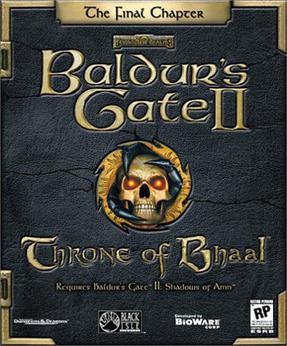
Baldur's Gate II: Throne of Bhaal is a 2001 expansion pack for the role-playing video game Baldur's Gate II: Shadows of Amn. It adds a multi-level dungeon called Watcher's Keep to the game and completes the main plot. There are several new weapons, a higher level cap, a further refined Infinity graphics engine, and new class-related features and magical skills. The novelization of the game was written by Drew Karpyshyn and released in September 2001.
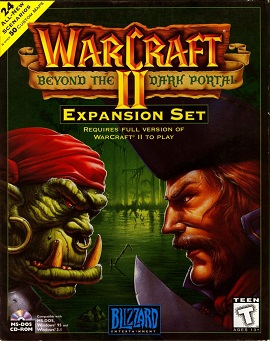
Warcraft II: Beyond the Dark Portal is an expansion pack for the real-time strategy video game Warcraft II: Tides of Darkness for MS-DOS, Microsoft Windows and Macintosh. It was developed by Blizzard Entertainment and Cyberlore Studios, and published by Blizzard in North America and Europe in 1996. It requires the full version of the original game to run and adds new story campaigns and multiplayer maps. The expansion was later released alongside Tides of Darkness for the PlayStation and Sega Saturn in 1997 as Warcraft II: The Dark Saga, and was included in the Warcraft II: Battle.net Edition for Windows PC and Macintosh in 1999.

Champions of Norrath: Realms of EverQuest is an action role-playing video game for the PlayStation 2, set in the EverQuest universe. The game is playable with one single player or cooperative for up to four players, but with a Network Adapter, players can take the game online with others and kill others or join to form groups of adventurers. It uses a re-worked and expanded Baldur's Gate: Dark Alliance game engine. A sequel called Champions: Return to Arms was released in February 2005.
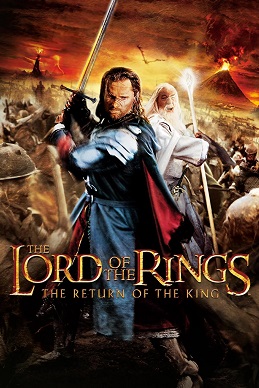
The Lord of the Rings: The Return of the King is a 2003 hack and slash action game developed by EA Redwood Shores for the PlayStation 2 and Windows. It was ported to the GameCube and Xbox by Hypnos Entertainment, to the Game Boy Advance by Griptonite Games, to mobile by ImaginEngine, and to Mac OS X by Beenox. The game was published by Electronic Arts. It is the sequel to the 2002 game The Lord of the Rings: The Two Towers.
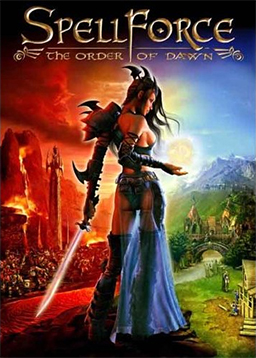
SpellForce: The Order of Dawn is a 2003 real-time strategy and role-playing video game, developed by Phenomic Game Development and published by Encore, Inc. The first instalment in the SpellForce series, the game takes place within a high-fantasy world in the years following a devastating cataclysmic event that has shattered the lands into several islands. The story itself focuses on an immortal slave who is granted their freedom in order to investigate growing troubles amongst some of these islands, which soon brings war to their inhabitants. The game combines elements of role-playing such as taking on quests, equipping characters and improving them when levelling up, alongside real-time strategy elements focused on gathering resources to construct bases and units. In addition to the game's story campaign, players can also engage in skirmish battles, and multiplayer matches.

SpellForce 2: Shadow Wars is a 2006 real-time strategy and role-playing video game, developed by Phenomic and published by JoWooD Productions. The second instalment in the SpellForce series, the game takes place several years after the events of 2003's SpellForce: The Order of Dawn. In Spellforce 2, players take on the role of a Rune Warrior, who is tasked with restoring peace and order to the land of Eo. The game features a single-player campaign with an expansive storyline, as well as multiplayer modes that allow players to battle against each other online.

Orcs & Elves is an adventure role-playing video game for the mobile phone and Nintendo DS. It was developed by id Software and Fountainhead Entertainment and published by EA Mobile and licensed by Nintendo for the DS version. It was released for mobile phones in May 2006 before being ported to the Nintendo DS in November 2007. The game is based on Doom RPG's engine and is id's first original intellectual property since Quake. The DS port of the game included graphical enhancements, such as 3D environments and camera cutscenes, along with improved character sprites, two new levels and the use of the touchscreen feature.

Resistance 2 is a 2008 science fiction first-person shooter video game developed by Insomniac Games and published by Sony Computer Entertainment for the PlayStation 3. The game was released in North America on November 4, 2008, in Australia on November 27, 2008, and in Europe on the following day. Resistance 2 is the sequel to the best-selling PlayStation 3 launch title Resistance: Fall of Man.

Lego Indiana Jones 2: The Adventure Continues is a 2009 action-adventure video game developed by Traveller's Tales and published by LucasArts. Based on the Indiana Jones franchise, it is the sequel to the 2008 video game Lego Indiana Jones: The Original Adventures. It was released for the Wii, Xbox 360, PlayStation 3, and Microsoft Windows; Feral Interactive published a version for Mac OS X in 2011. TT Fusion developed a handheld version for the Nintendo DS and PlayStation Portable that, although released under the same name, is different in gameplay and amount of content.

Rift is a fantasy free-to-play massively multiplayer online role-playing game developed by Trion Worlds. Rift takes place within the fantasy world of Telara. Two competing factions, composed of a selection of races and classes, battle each other and the enemies who emerge from dynamic "rifts". The game was released in March 2011. A port of the game, called Rift Mobile, was released for Android on January 25, 2012.

Two Worlds II is an action role-playing game developed by Polish developer Reality Pump and published by TopWare Interactive as a sequel to 2007's Two Worlds. It was released on 9 November 2010 in Europe for Microsoft Windows, Mac OS X, Xbox 360 and PlayStation 3, and on 25 January 2011 in North America for the same platforms. Two Worlds II is a real-time role-playing game that takes place in an open fantasy world where players take the role of a single character with whom they can explore and undertake quests.
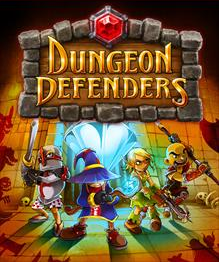
Dungeon Defenders is a hybrid multiplayer video game developed by Trendy Entertainment that combines the genres of tower defense and action role-playing game. It is based on a showcase of Unreal Engine 3 named Dungeon Defense. The game takes place in a fantasy setting where players control the young apprentices of wizards and warriors and defend against hordes of monsters. A sequel titled Dungeon Defenders II was released in 2015.

Orcs Must Die! is an action-tower defense video game developed and published by Robot Entertainment and Mastertronic. It is a tower defense game that eschews the traditional top-down view of similar games, instead using a third-person action-oriented viewpoint. After being demonstrated at Penny Arcade Expo East 2011, the game was released via Xbox Live Arcade on October 5, 2011, and for Windows PCs on October 12, 2011.

Cobalt is an action side-scrolling video game developed by Oxeye Game Studio and published by Mojang Studios. It was released on 2 February 2016 for Microsoft Windows, Xbox 360 and the Xbox One consoles.

Ben 10: Omniverse is an action video game based on the American animated series of the same name. The game was published by D3 Publisher in North America and Namco Bandai Games in Europe and Australia. It was released in November 2012 for PlayStation 3, Xbox 360, Nintendo DS, Nintendo 3DS, Wii, and Wii U.

Orcs Must Die! Unchained is the third installment in the Orcs Must Die! franchise from Robot Entertainment, available for Microsoft Windows and PlayStation 4. Unchained was initially released as a beta version in 2014, and in its release form on April 18, 2017 for the Windows platform, while the PlayStation 4 version was released on July 18, 2017.
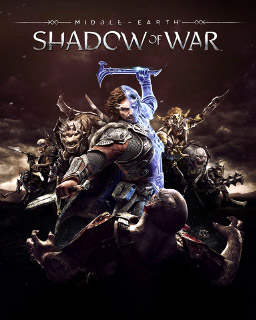
Middle-earth: Shadow of War is a 2017 action-adventure video game developed by Monolith Productions and published by Warner Bros. Interactive Entertainment. Shadow of War is the sequel to 2014's Middle-earth: Shadow of Mordor, both of which are based on J. R. R. Tolkien's legendarium. The game is set in between the events of Peter Jackson's The Hobbit and The Lord of the Rings film trilogies, from which the game also takes inspiration. The player continues the story of Talion, the Gondorian Ranger who bonded with the wraith of the Elf Lord Celebrimbor, as they forge a new Ring of Power to amass an army to fight against Sauron. The game builds upon the "nemesis system" introduced in Shadow of Mordor, allowing Talion to gain followers from several races of Middle-earth and command them in warfare.

Deathtrap is a tower defense/action RPG video game released in 2015 by NeocoreGames for Microsoft Windows and Mac OS X. It shares the gothic fiction setting with NeocoreGames' The Incredible Adventures of Van Helsing and features a lone protagonist who is sent to a border world in an alternate dimension ("Ink") to defend a series of ancient strongholds against a horde of monsters invading from the depths of that dimension and trying to break through to the physical world.

Orcs Must Die! 3 is a 2020 action-tower defense video game developed and published by Robot Entertainment. It is the fourth installment in the Orcs Must Die! series, and the direct sequel to Orcs Must Die! 2. It was released as a timed exclusive on Stadia on July 14, 2020, and for Windows, PlayStation 4, Xbox One and Xbox Series X/S on July 23, 2021.




















